Help celebrate ‘America’s Best Idea’ by visiting a national park site and enjoy free entry as you #FindYourPark August 25-28.
By Gaelyn, The Geogypsy
National Park Service, August 24, 2016 —
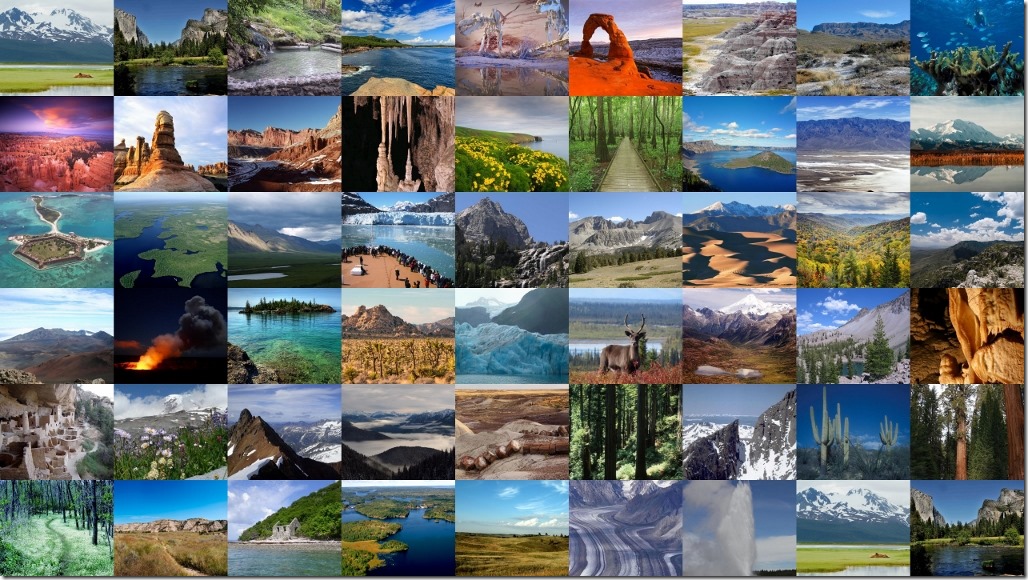
Although the National Park Service celebrates its 100th birthday on August 25th the story of our national parks begins with an older history than the agency established to protect the now 412 sites across the United States. Update: Make that 413 sites as President Obama today “designated the Katahdin Woods and Waters National Monument encompassing awe-inspiring mountains, forests, and waters of north-central Maine.”
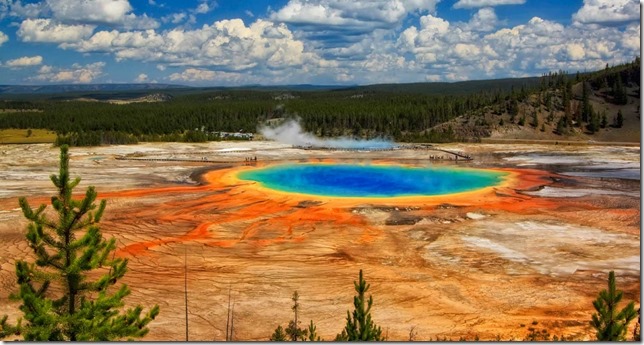
Yellowstone National Park NPS archives
First National Park
A story of long ago tells how men camping in the Yellowstone region of Wyoming thought the landscape so special it should not be developed but instead put aside for all people. Whether this is true or not, Congress established Yellowstone National Park in 1872 “as a public park or pleasuring-ground for the benefit and enjoyment of the people” and placed it “under exclusive control of the Secretary of the Interior.” making this amazing landscape America’s first National Park. In following years the United States authorized additional national parks and monuments, many of them carved from the federal lands of the West. These, also, were administered by the Department of the Interior, while other monuments and natural and historical areas were administered by the War Department and the Forest Service of the Department of Agriculture. No single agency provided unified management of the varied federal parklands.
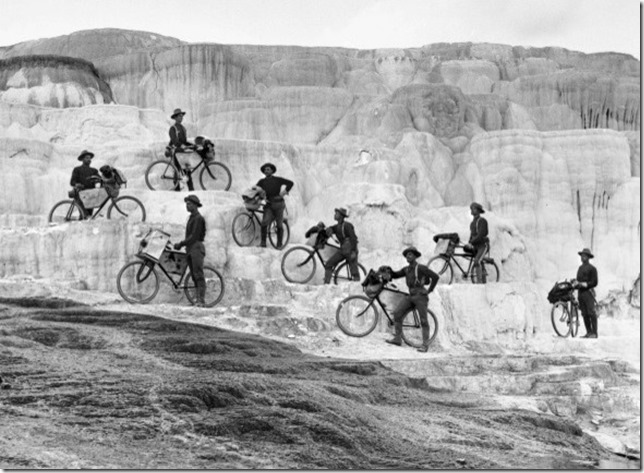
Buffalo soldiers at Yellowstone, Wyoming 1896 (NPS archives)
Yellowstone’s first “Rangers” were African American Buffalo Soldiers, named by Native Americans because their wooly hair looked like buffalo. They drilled and marched at Vancouver Barracks, now part of Fort Vancouver National Historic Site in Washington, and they pedaled to Yellowstone when the military wanted to see if bicycles were practical vehicles. They were assigned to keep illegal grazing down, fight forest fires, build trails and roads, and expel poachers. I certainly hope they didn’t have to patrol on bicycles in this rugged land.

Mesa Verde National Park, Colorado established 1906
Antiquities Act
Signed by President Theodore Roosevelt, the 1906 Antiquities Act states “That the President of the United States is hereby authorized, in his discretion, to declare by public proclamation historic landmarks, historic and prehistoric structures, and other objects of historic or scientific interest that are situated upon the lands owned or controlled by the Government of the United States to be national monuments…” This Act also protects historic and prehistoric ruins from unauthorized excavation and looting. In fact Mesa Verde was the first National Park designated to protect Native American ruins that same year. As President from 1901 to 1909, Roosevelt signed legislation establishing five new national parks and four national monuments.
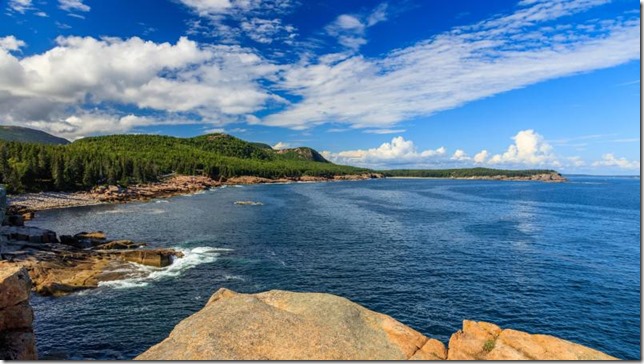
Acadia National Park, Maine established 1916 (NPS archives)
Birth of NPS
On August 25, 1916, President Woodrow Wilson signed the Organic Act creating the National Park Service (NPS), a new federal bureau in the Department of the Interior responsible for protecting the 35 national parks and monuments then managed by the department and those yet to be established. The Organic Act states that “The Service thus established shall promote and regulate the use of the Federal areas known as national parks, monuments and reservations…by such means and measures as conform to the fundamental purpose of the said parks, monuments and reservations, which purpose is to conserve the scenery and the natural and historic objects and the wild life therein and to provide for the enjoyment of the same in such manner and by such means as will leave them unimpaired for the enjoyment of future generations.”

Stephen Mather (NPS archives)

Horace Albright (NPS archives)
Stephen Mather, the first Director of NPS, recognized the parks needed public support and as an astute marketer aligned NPS with railroads and auto associations promoting the parks as travel destinations. Horace Albright, his deputy and later his successor as Director, both saw the benefit of extending the park system to the East to where the bulk of the population and elected officials who controlled their budget. In 1916, President Wilson announced the creation of Sieur de Monts National Monument and three years later signed the act establishing Lafayette National Park. In 1929, the name changed to Acadia National Park.
National Parks can be created only through an act of Congress. The Secretary of the Interior is usually asked by Congress for recommendations on proposed additions to the System. The Secretary is counseled by the National Park System Advisory Board, composed of private citizens, which advises on possible additions to the System and policies for its management

Visitor Center built 1937 by CCC Cedar Breaks National Monument, Utah
Decades of Growth & Change
An Executive Order in 1933 transferred 56 national monuments and military sites from the Forest Service and the War Department to the National Park Service. This action was a major step in the development of today’s truly national system of parks—a system that includes areas of historical as well as scenic and scientific importance. During this time, the U.S. was in the depths of the Great Depression. President Franklin Delano Roosevelt sought to change that by putting the unemployed to work through the Civilian Conservation Corps, while also conserving the country’s national resources. Groups of men fanned out across the country, planting billions of trees, fighting wildfires and building roads and trails at places like Shenandoah and Glacier national parks.
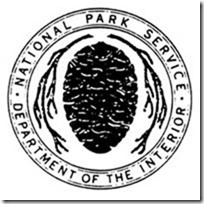
On July 20, 1951, the arrowhead became the official emblem of the National Park Service.
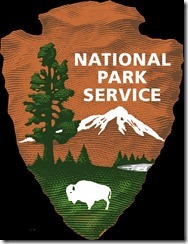
Each image on the arrowhead represents a valuable resource that the National Parks strive to protect. The mountain, Mount Rainier in fact, represents the amazing scenery in our national parks as well as the natural resources they provide. The Sequoia tree represents the plants, while the American Bison stands for wildlife. The arrowhead shape reminds us of the historical and cultural values of our parks.
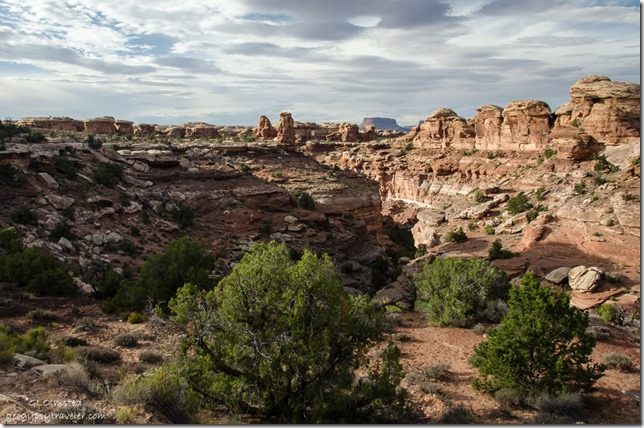
Canyonlands National Park, Utah established 1964
The Wilderness Act of 1964 prompted NPS to carefully examine all park land that potentially qualified as wilderness areas and provided additional legal protection for park areas threatened with development. The National Historic Preservation Act of 1966 required that all historical parks be entered in the National Register of Historic Places.
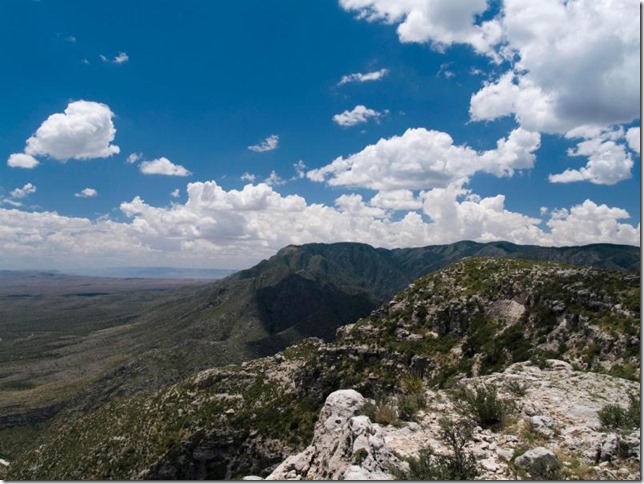
Guadalupe Mountains National Park, Texas established 1966 (NPS archives)
Mission 66 was a 10-year program, initiated by National Park Service Director Conrad L. Wirth in 1956, to upgrade facilities, staffing, and resource management throughout the System by the 50th anniversary of the Service in 1966. Congress appropriated more than a billion dollars over the 10-year period for Mission 66 improvements. The legacy of the program included dozens of visitor centers, hundreds of employee residences, as well as the Mather and Albright employee training centers at Harpers Ferry and the Grand Canyon.
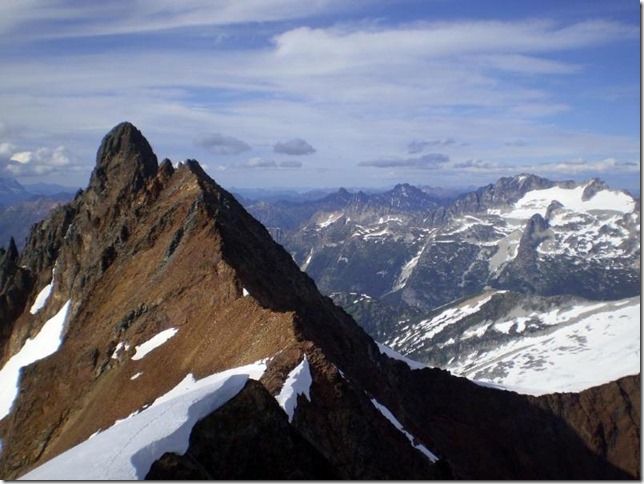
North Cascades National Park, Washington established 1968 (NPS archives)
In 1968 the Wild and Scenic Rivers Act and National Trails System Act expanded the diversity of units in the National Park System. And the Volunteers in the Parks Act of 1969 allowed volunteers to help with administered areas. Then the National Environmental Policy Act of 1969 directed all federal agencies to avoid or minimize environmental degradation and conduct planning with studies of potential environmental impact.

Zion National Park, Utah established 1919 (NPS archives)
In an Act of August 18, 1970, Congress elaborated on the 1916 NPS Organic Act defining the NP system as “any area of land and water now or hereafter administered by the Secretary of Interior through the NPS for park, monument, historic, parkway, recreational or other purposes” and saying all units of the system have equal legal standing in a national system.

Theodore Roosevelt National Park, North Dakota established 1978 (NPS archives)
The Endangered Species Act of 1973 required the protection of endangered or threatened species which increased the role of science in park management. Redwood National Park was expanded in 1978 to stop the threat of logging adjacent to the park which encouraged the protection of national parks from external threats.
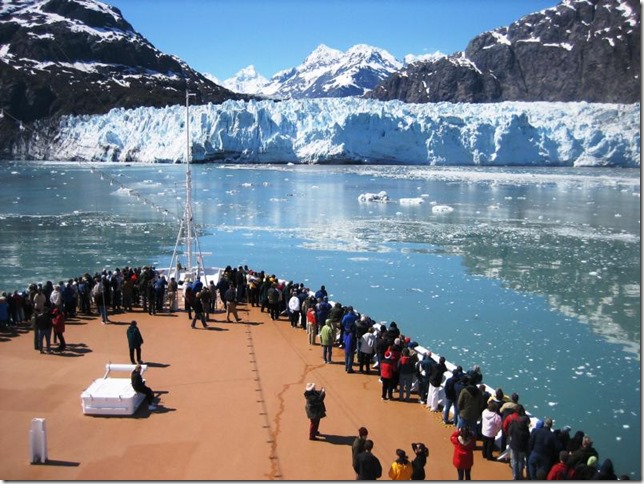
Glacier Bay National Park and Preserve, Alaska established 1980 (NPS archives)
In 1980, the Alaska National Interest Lands Conservation Act converted most of the 45 million acres of national monuments President Jimmy Carter had proclaimed doubling the size of the National Park System and increasing designated wilderness.
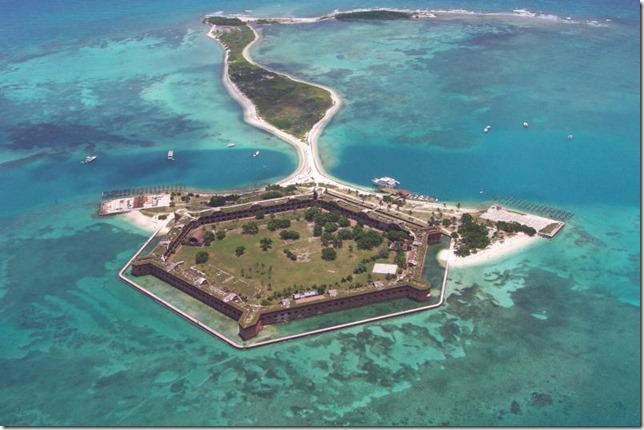
Dry Tortugas National Park, Florida established 1992 (NPS archives)
To commemorate NPS’s 75th birthday experts from within and outside the agency made recommendations for the future urgently calling for park management grounded in scientific research.
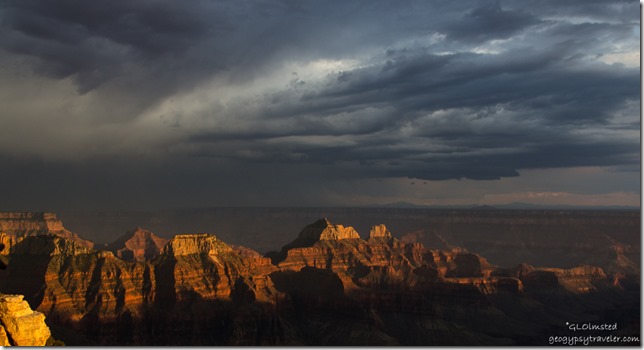
Grand Canyon National Park, Arizona established 1919
NPS today
The National Park System of the United States now comprises 412 areas covering more than 84 million acres in 50 states, the District of Columbia, American Samoa, Guam, Puerto Rico, Saipan, and the Virgin Islands. These areas are of such national significance as to justify special recognition and protection in accordance with various acts of Congress. The National Park Service manages parks, monuments, historic sites, memorials, battlefields, preserves, recreation areas, rivers, seashores, lakeshores, parkways, and trails. Their mission to preserve “unimpaired the natural and cultural resources and values of the National Park System for the enjoyment, education, and inspiration of this and future generations.”
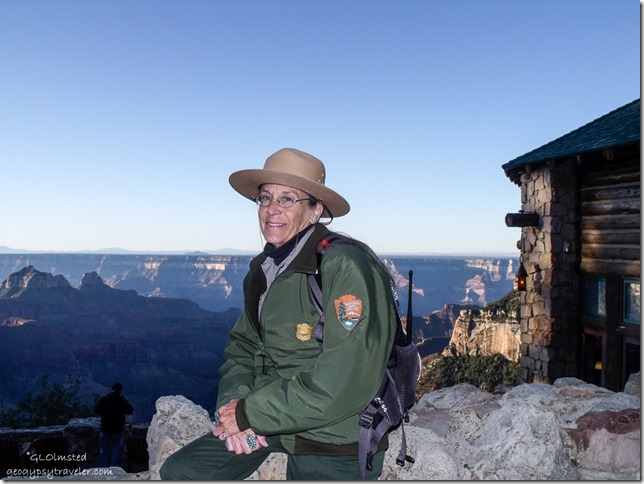
The role of today’s Park Rangers carry the same responsibilities as the Buffalo Soldiers, yet we are no longer generalists with individuals doing every needed job out there. Divisions have been created for administration, facilities, interpretation and education, science resource, law enforcement, emergency medical services, search and rescue, structural fires, dispatch, and backcountry, all under the supervision of a park superintendent. I am honored to be an Interpretive National Park Ranger helping people of the world understand and connect to these special places.
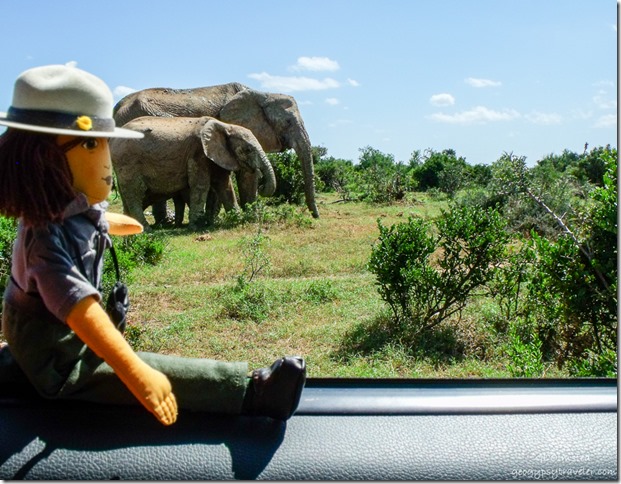
Addo Elephant National Park South Africa established 1931
The founding of Yellowstone National Park began a worldwide national park movement that today includes some 1,200 national parks or preserves in more than 100 nations.
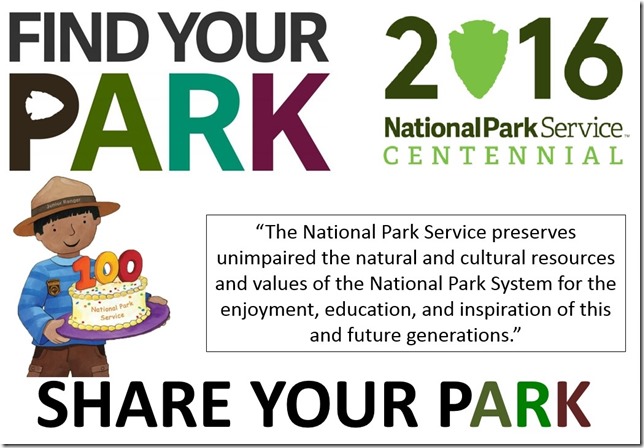
Help celebrate ‘America’s Best Idea’ by visiting a national park site and enjoy free entry as you #FindYourPark August 25-28. At the North Rim Grand Canyon National Park we’ll be serving birthday cake, kids can join in to break a piñata, and I’ll be presenting my new evening program at 8:30 when I share the history of the National Park Service and visitors join in by sharing their favorite National Park.
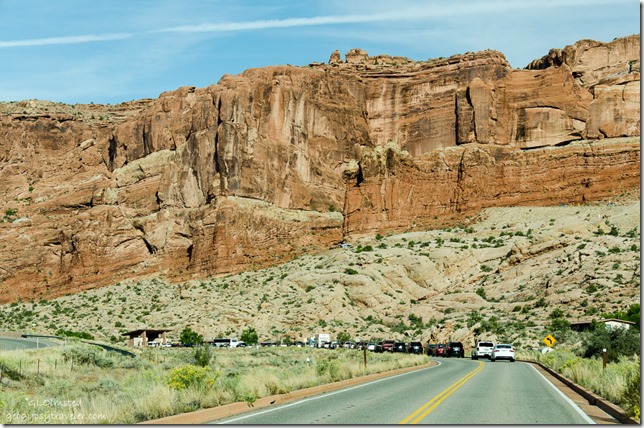
Arches National Park, Utah established 1971
Future of NPS
As America has grown in population over the past 100 years, so has the visitation to its most gorgeous and cherished spots. In 1916 the total recreation visitors to all sites was 326,500. In 2015 the number of visitors exceeded 300 million. Could mean we need more national park sites. Maybe we’ll see some new sites added before President Obama leaves office like Bears Ears in Utah, Birthplace of Rivers in West Virginia, Greater Grand Canyon Heritage in Arizona, and Gold Butte in Nevada.
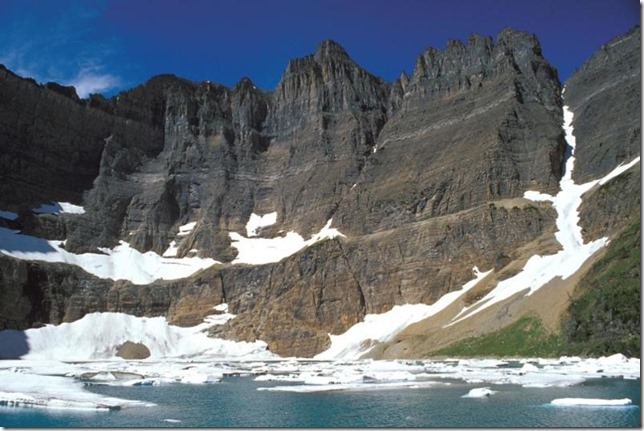
Glacier National Park, Montana established 1910 (NPS archives)
Our national parks play a critical role in protecting wildlife and ecosystems in an ever evolving landscape. Climate change, however, is one threat that can’t be stopped by park boundaries. It will be interesting to see what the next 100 years will bring.
“As we mark the centennial of the National Park Service, my question is this: What is the relevance of our National Parks in the twenty first century? And how might these public commons bring us back home to a united state of humility?”
– Terry Tempest Williams

HI I’M GAELYN, THE GEOGYPSY
I’m a semi-retired gal, traveling solo for 40 years. My passions include connecting to nature, photography and sharing stories.
I started exploring US National Parks in 1977 and 20 years later became a summer seasonal Park Ranger. Winter I seek warm climates and would gladly live an endless summer if I could. Three visits to South Africa has been good for that. For over 20 years I’ve lived full-time in a RV exploring the USA.
– Gaelyn
About Geogypsy www.geogypsytraveler.com









